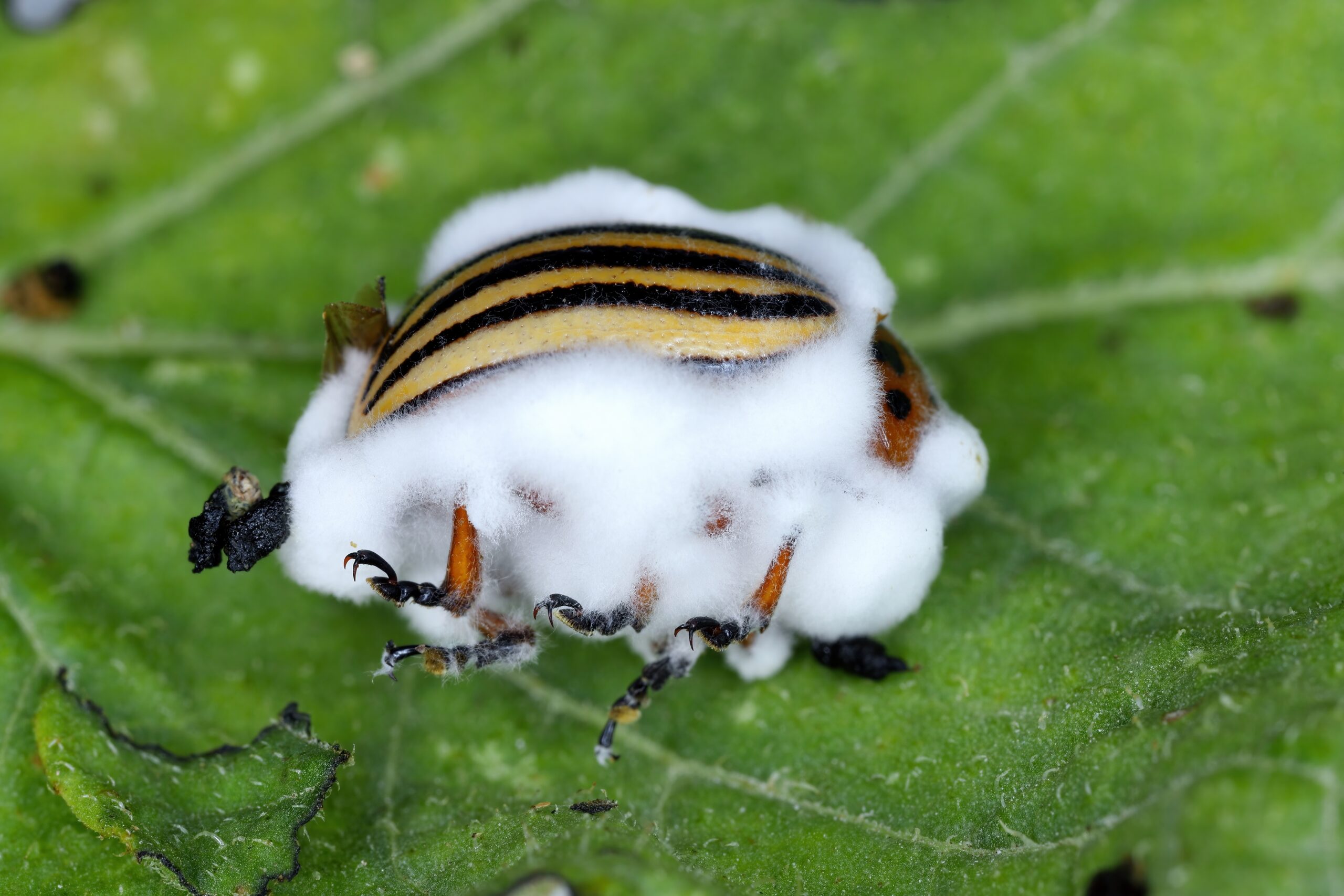A New Parasitic Fungus Is Taking Control of Spiders and Turning Them Into Zombies Across Ireland

Waking up one day and realizing you’re no longer in control of your own body—that’s the kind of nightmare no one wants to experience. Your movements, your actions, even your final moments—all dictated by something else.
For some spiders in Ireland, this isn’t a horror movie. It’s happening right now.
Scientists have discovered a parasitic fungus that doesn’t just infect spiders—it takes over their bodies, manipulates their behavior, and ultimately consumes them from the inside out. This isn’t just a battle between host and parasite. This is mind control at a microscopic level, proving that nature has its own way of writing horror stories.
But how does a fungus with no brain or nervous system take control of a living creature? And what does this reveal about the hidden intelligence of the natural world?
How Does It Turn Spiders Into Zombies?
 Image source: Shutterstock
Image source: Shutterstock
The takeover begins subtly. A spider, going about its usual routine—building webs, catching prey, navigating its world—comes into contact with microscopic fungal spores. At first, nothing seems out of the ordinary. The spider continues its life, unaware that something is already working its way inside.
Once the spores penetrate the spider’s exoskeleton, the real nightmare begins. The fungus spreads through the body, invading tissues and organs, all while keeping the host alive. Unlike typical infections that weaken or kill quickly, this fungus is patient. It needs the spider to function—at least for a while.
As the fungus matures, the spider starts behaving differently. Some infected spiders remain unnaturally still in exposed locations, as if frozen in place. Others go about their usual activities, unknowingly spreading the infection to others. Then, open wounds appear on the spider’s exoskeleton, oozing a thick, spore-filled liquid. These spores drift into the air, waiting for their next victim.
The most unsettling part? Scientists suspect the fungus is directly influencing the spider’s nervous system, much like Ophiocordyceps does with ants. It’s not just a passive infection—it’s control. The spider’s final days are spent as a pawn, serving the parasite’s needs before it’s ultimately consumed.
What makes a fungus capable of such manipulation? And if it can do this to a spider, what else might nature be capable of?
What This Means for the Ecosystem
A fungus that turns spiders into zombies might sound like a bizarre natural oddity, but its impact runs deeper than just another creepy discovery. Spiders play a crucial role in maintaining ecological balance—they help control insect populations, acting as nature’s pest control. If a parasite like this spreads unchecked, it could throw that balance off.
A decline in spider numbers could mean a surge in insects, which might affect plant life, agriculture, and even human environments. But nature isn’t easily tipped off balance. Parasitic fungi like this one have likely coexisted with their hosts for millions of years. They’re brutal, but they don’t typically wipe out entire species. Scientists believe that while this fungus is highly effective at infecting spiders, it likely only affects a fraction of the population at a time.
One lingering question is whether this fungus could jump to other hosts. Some parasites adapt and spread under the right conditions, especially as ecosystems shift due to climate change or habitat destruction. But researchers suggest this particular species is highly specialized, designed to infect only certain types of spiders.
Still, keeping an eye on these hidden forces of nature matters. If environmental conditions change, this fungus could become more aggressive—or fade away entirely. Either way, understanding how these microscopic power struggles shape the world around us gives us a clearer picture of the delicate, often unseen forces that keep ecosystems in check.
Could This Happen to Humans? (Addressing the Fear Factor)
 Image source: Pexels
Image source: Pexels
A fungus that hijacks a spider’s body raises an unsettling question: Could something like this ever happen to humans? If nature has already figured out mind control in insects, is it really that far-fetched?
The short answer: No, there’s no reason to panic.
Fungi like this one evolve to target specific species. The biochemical relationship between the fungus and the spider’s nervous system is highly specialized—it doesn’t translate to larger animals, let alone humans. Even Ophiocordyceps, the real-life inspiration for The Last of Us, poses no threat to people. Our immune systems, body temperatures, and complex brains make us unfit hosts for these parasites.
That said, fungi are resilient. Some species, like Candida auris, have already shown worrying resistance to medical treatments. While mind-controlling fungi won’t be infecting humans anytime soon, the adaptability of fungi in general is something researchers are paying close attention to—especially as climate change creates new conditions for them to thrive.
The real lesson here isn’t fear. It’s curiosity. Understanding how fungi manipulate their hosts could lead to breakthroughs in medicine, neuroscience, and even eco-friendly pest control. The more we learn about nature’s hidden mechanisms, the better equipped we are to harness them—for good.
The Bigger Picture: Nature’s Hidden Powers
 Image source: Shutterstock
Image source: Shutterstock
A fungus that turns spiders into zombies isn’t just a strange biological quirk—it’s a glimpse into nature’s hidden intelligence. We tend to think of intelligence in human terms, tied to brains and consciousness. But fungi operate on an entirely different scale, shaping life in ways we’re only beginning to understand.
For centuries, fungi have played crucial roles in medicine, agriculture, and even technology. The same kingdom that gave us penicillin, beer, and bread also harbors species that have evolved to manipulate life itself. Some scientists believe that by studying parasitic fungi, we could unlock new treatments for neurological disorders, develop eco-friendly alternatives to chemical pesticides, and better understand the complex interactions that sustain ecosystems.
At its core, this discovery is a humbling reminder: we are still only scratching the surface of what’s happening in the microscopic world around us. Life on Earth is full of unseen forces—some terrifying, others awe-inspiring—all working in ways we barely comprehend.
The real question isn’t whether fungi could control us. It’s whether we’re paying enough attention to the lessons nature is trying to teach us.
The Unseen Forces That Shape Life
A fungus that hijacks a spider’s body, turning it into a mindless puppet before consuming it from within, sounds like something out of a horror movie. But this isn’t fiction—it’s a glimpse into the eerie intelligence of nature. While it’s easy to see this as just another unsettling quirk of the natural world, it’s also a reminder of how deeply interconnected life truly is. Parasites like this fungus help regulate species populations, maintaining balance in ways we often overlook.
This discovery also challenges how we define intelligence. We tend to think of control and manipulation as traits of conscious beings, yet here we have a mindless organism orchestrating complex behavioral changes in its host. Fungi have existed for over a billion years, shaping ecosystems, medicine, and even human history in ways we are only beginning to appreciate. Could unlocking their secrets lead to breakthroughs in neuroscience, medicine, or sustainable pest control? The possibilities are as vast as they are fascinating.
The real takeaway isn’t fear—it’s curiosity. The natural world operates on levels we rarely consider, and each new discovery reveals just how much we have left to learn. Science fiction often warns us about the unknown, but reality has always been stranger. The question is, are we willing to look closer?
Featured Image Source: Shutterstock
Sources:
-
Evans, H., Fogg, T., Buddie, A., Yeap, Y., & Araújo, J. (2025). The araneopathogenic genus Gibellula (Cordycipitaceae: Hypocreales) in the British Isles, including a new zombie species on orb-weaving cave spiders (Metainae: Tetragnathidae). Fungal Systematics and Evolution. https://doi.org/10.3114/fuse.2025.15.07
Loading...






